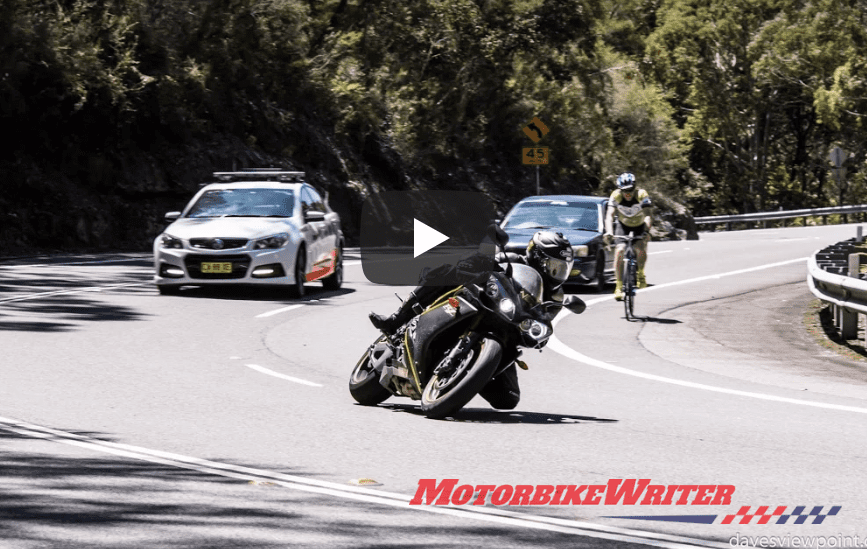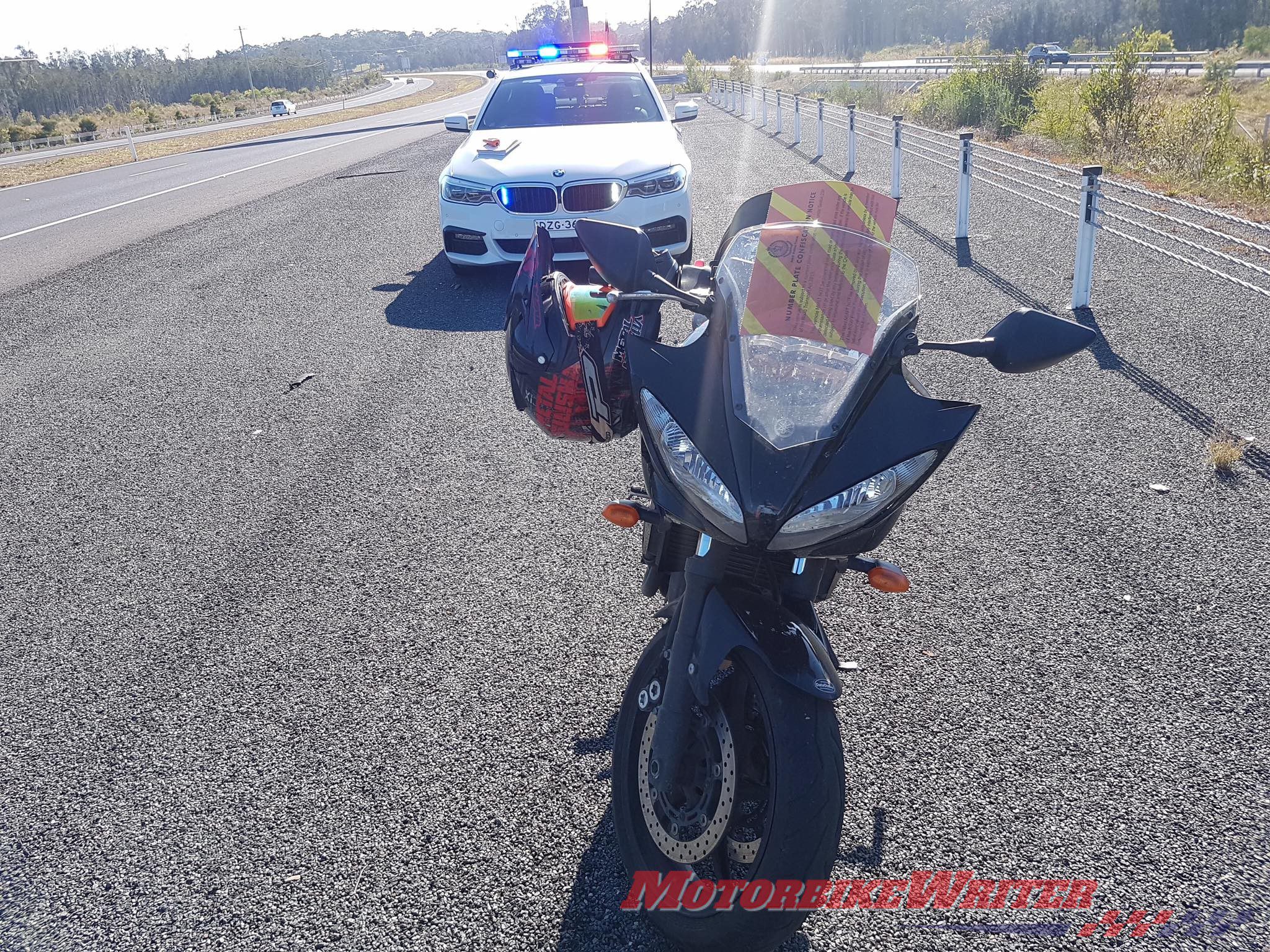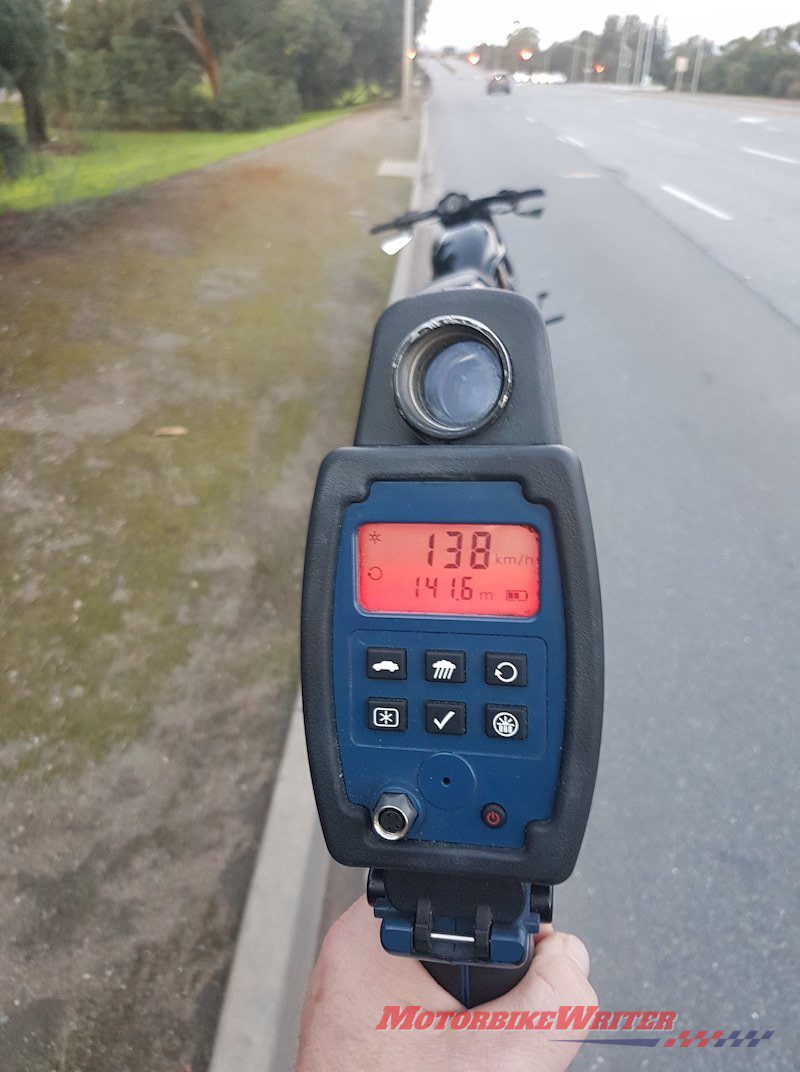Riders who are fined for high-range speeding over 45km/h are often also charged with driving in a “manner dangerous”, says NSW traffic and criminal law specialist Chris Kalpage.
Our contributing lawyer says the extra charge is often based on the speed which may not be “objectively dangerous”.
Chris has previously addressed the issues of dangerous driving, negligent driving causing death or grievous bodily harm and a charge of negligent driving resulting from a crash. We suggest you read this in relation with this. See those articles at the end of this article under the heading “Stories You May Also Like”.
In this article Chris addresses the issues of charges of “Speed Dangerous” and “Manner Dangerous” arising out of a high-range speeding charge.
Dangerous charge
Often I will be approached by riders/drivers who have been charged with an over-45km/h speed and have also been given a court attendance notice for ‘drive manner/speed dangerous’.
The basis of the charge is as the title implies the manner and or speed involved in the driving, but sometimes it is purely based on the speed itself, which on careful assessment may not be objectively dangerous. Similarly the manner of driving on cross-examination may not be able to be sustained.
The test as to whether someone was driving in a manner dangerous focuses on the potential danger, rather than whether the actual danger was realised or not. For instance, high speed in a residential area may satisfy a high potential for danger compared with high speed on a freeway in the early hours of the morning.
Severe penalties
The problem in a charge like this is that the penalties can be quite severe on conviction, which can include a period of incarceration and/or a period of disqualification being an unlimited maximum, an automatic of three years, to a minimum of one year.
The other issue is that your licence and potentially plates can be taken on the spot which for some of my clients has resulted in them being stranded in the middle of nowhere.
These cases are serious and we will often start with an investigation of the in-car video (ICV) to view what the officers could see.
Often what they could see is quite different to what they believed they could see. For instance, hearing a bike or car with an aftermarket exhaust that seems loud and their belief accordingly that it was going fast.
Any witness in any criminal case can be influenced by their bias and make assumptions based on their particular bias in what they believe they saw. It is only when you see the ICV that you may get an idea as to what the officer actually saw and what is the filling in of gaps based on their bias.
Often the case involves careful cross-examination of each segment of the alleged offending behaviour to establish that the driving/riding does not constitute manner dangerous.
Police pursuit
I have had cases where a motorcycle is travelling above the speed limit and the police vehicle, some distance behind has seen the bike and then pursued it for a number of kilometres.
A particular case I did involved a bike traveling down from the mountains on the M4 with an unmarked police car traveling some distance behind.
Initially it was obvious from the ICV that the police officer was targeting another car but then when he saw the bike he decided to target that. The bike was traveling smoothly but at a speed in excess of the speed limit.
The police officer had to speed to around 180km/h to catch up. The bike was passing vehicles smoothly, but the police vehicle was flying up behind vehicles causing cars to dive everywhere.
The officer was of the view that it was my client’s riding that caused vehicles to dart in different directions which was questionable at best, as was the police officer’s estimate of speed.
Despite painstaking cross-examination of the police officer and reference to the video section by section, the court convicted my client. However, the magistrate took into account those issues that had been raised in cross examination and additional submissions made in sentence and gave him the minimum period of disqualification.
Had the Magistrate not observed the cross examination of the police officer and a plea of guilty had been entered based on the police facts as alleged the outcome would have been far worse. Accordingly in some instances there is a tactical basis for challenging the evidence to highlight the exaggeration by police.
Defending two charges
Often a manner/speed dangerous charge based on excessive speed will include a charge of speed over 30 or over 45km/h.
We defend these charges with the intention of entering a guilty plea to the less-serious excessive-speed charge (if applicable) in an effort to get police to withdraw the dangerous driving primary charge.
In one case, a rider in a remote country location was pulled over by police using a Lidar. He was alleged to be riding more than 45km/h over the limit and riding in a dangerous manner. His licence was confiscated on the spot and he was charged by field court attendance notice, having him stranded in the middle of nowhere.
We subsequently mounted a defence and ran the case at Holbrook Local Court. Based on our argument that based on the location and time of day combined with traffic conditions it wasn’t dangerous. The prosecution agreed to withdraw the speed dangerous at hearing on a plea of guilty to the speeding offence which was the difference between a potential disqualification of six months as opposed to three years.
In many similar cases, a strong defence involving scientific evidence can achieve a similar compromise.
The court has to take into account all the circumstances of the case, including the nature, condition and use of the road, the amount of traffic, and any obstructions or hazards on the road. When all this is raised by the defence and taken into consideration by the prosecution it may make sustaining a charge of manner/speed dangerous untenable.
Disclaimer
This article is for reader information and interest only and is based on New South Wales law. It is not intended to be comprehensive, and does not constitute and must not be relied on as legal advice.
Please be aware that every case is different and the matters raised may not be of specific relevance to your situation but may have a general application. You must seek specific advice tailored to your circumstances. Chris is happy to talk to anyone needing clarification. He can be contacted on 0418 211074.




